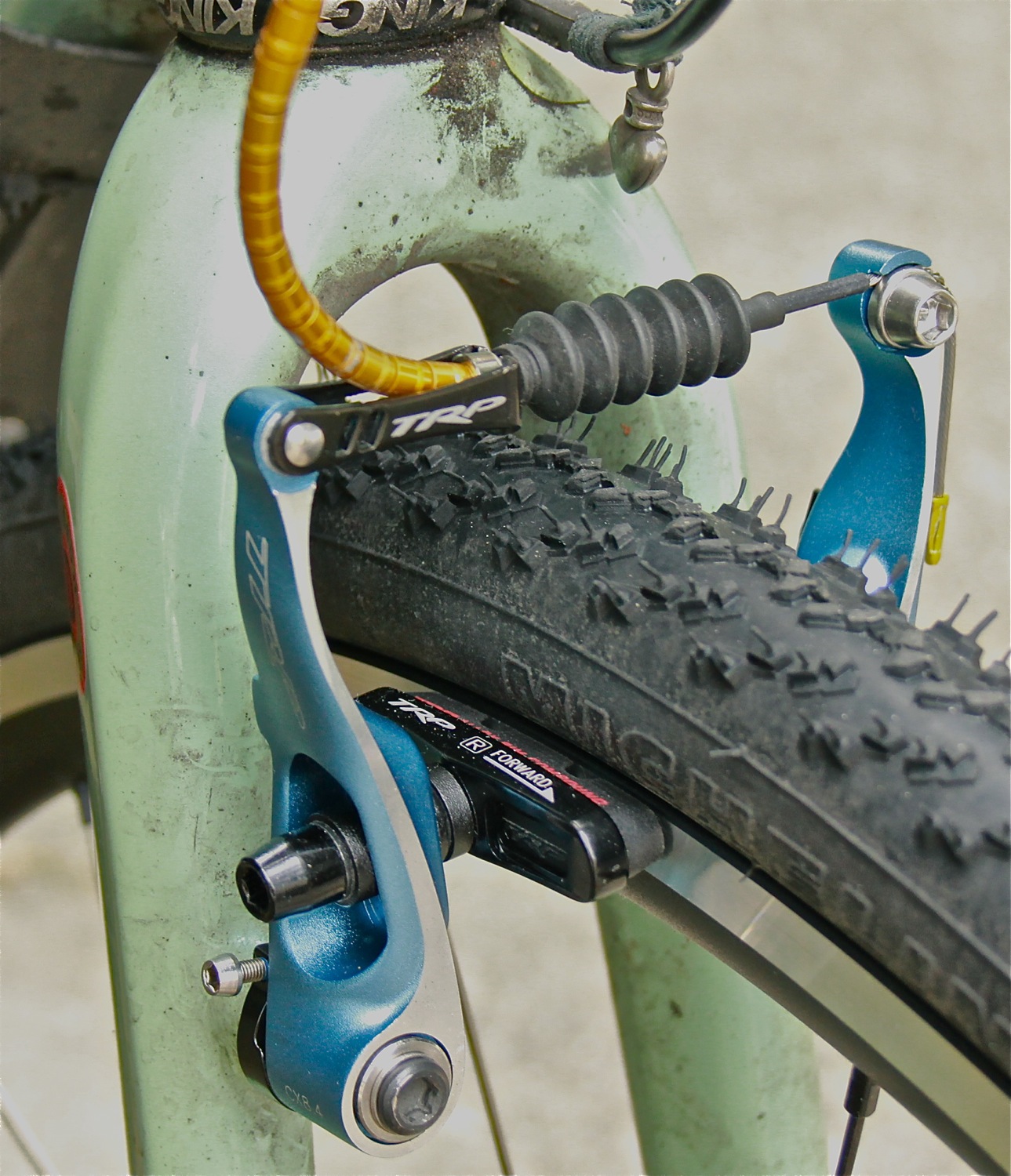
Cyclocross vs. Road bike – What is the difference ?
Cycling enthusiasts would understand the two different terminologies pretty well. However, there may be a lot more you should know about these bikes as there are more technicalities involved than you might think. Cyclocross vs. Road Bike is a standard comparison these days, so we thought why not elaborate the key features and specifications that constitute the bikes.
What are the Differences ?
There is a common perception about Cyclocross being a modified version of road bikes. However, there are some considerable variations and differences in design, posture of the rider, geometry, and also the material. We are going to talk in detail about each and every aspect of these differences in this article.
The Use of Two Bikes
To understand the differences, it is vital to know the use of the two bikes. Here is what you should know
Cyclocross is specially designed for Cyclocross races. These are lighter in weight because the riders have to carry them in hand as well for a little while. We would rather limit ourselves from going into the technicalities of the race, but generally, Cyclocross are very light and easily portable.
Road bikes are designed to hit the roads, and their built can be somewhat heavier. They are more suitable for marathon races and may have a suitable model that supports our body structure especially for longer rides.
To make the discussion easier comprehension, here are some of the features we will be talking about.
- The geometrical structure of Cyclocross vs. Road bike.
- Comfort level and riding posture difference in both
- The braking system of the bikes.
- Standard wheel sizes and tires.
- The difference of Gear shifters.
- Routing of cables on both the bikes.
- The difference in speeds.
The Geometric Structure

Image source: bikerumor.com
Let’s first talk about Cyclocross geometry here. They have higher brackets at the bottom. Hence, it keeps you more upright, and your back seems to stay straight all the time while riding. It is mainly designed in this fashion because Cyclocross races would also involve other races such as foot race and swimming. Hence, this type of bike design tends to relax the back muscles and prevents them from extra stretching.
In Road Bikes, things can be a little stretchy. The bottom bracket is a lot lower, and you have to stretch out a bit to reach the handles. These bikes are typically used in marathons where there is only cycling involved. They may seem a bit uncomfortable as compared to Cyclocross, but these bikes are designed in a way perfect for high speed and long distance racing.
The Level of Comfort
If you do not intend to use these bikes for racing and your primary need is simply biking, then comfort should be one of the top priorities. Hence, you should know that Cyclocross would be a better choice when it comes to comfort because they don’t stretch out your body.
Wheels

Image source: cxmagazine.com
There is apparently no difference in the rear wheel design of both the bikes. A standard size of 135mm is maintained for both Cyclocross and road bikes. Cyclocross bikes also have rear hubs that are spaced at 130 mm which is standard roadside spacing. The wheelbase in Cyclocross bikes is also wider. It is done to ensure that maneuvering the bike through muddy roads becomes easy.
Tire Designs

Image source: lemarcheduvelo.eu
These are one of the major difference points when it comes to Cyclocross and road bikes. Cyclocross is designed to bear mud, slime, and all the dirt. They are essentially dirt bikes and hence designed to withhold the toughness of the surroundings. Cyclocross construction is quite intelligently done.
The tires are normally wider and have a better grip. It is done so to get more friction between the road and the bike. Hence, it keeps you from slipping more frequently. Cyclocross tires are knobby. It is because this allows the riders to change them with much more ease.
On the other hand, road bikes have a lot thinner tires. It is so because road bikes are run on smooth and harder surfaces. They can be as thin as just 23mm to 28mm.
The two bikes may have different tires, but they both are available in tubular and glued types. Also, they can be installed in any frames so as long as you know the purpose of your bike you can install any of the two types of your frames without much of a hassle.
Material and Frame Design
You may not necessarily have to carry your bike on your shoulder. However, if you participate in a Cyclocross race, you have no choice about it. This is one reason that Cyclocross bikes have a flat underside for the top tube. It allows the riders to carry the bike on their shoulders.
If you were thinking to do the same with your road bike, it might not be the best idea because of two reasons.
- Firstly, the top tube may not have a flat underside.
- Secondly, the weight of your road bike is much greater.
When it comes to weight comparison, Cyclocross have the upper hand here. They are extremely light weight and actually, there is quite an apparent reason for it.
Cyclocross bikes are made of carbon and fiber which have been the major technological advancements in the world of automotive. These materials are extremely light and are as strong as steel. Hence, you get the same strength with a lighter weighing vehicle.
Road bikes are made of steel or aluminum. Therefore, they are expectedly heavier. Although, steel and aluminum frames would cost you less than the carbon and fiber frames.
Now it’s up to you what material you choose. Here are two recommendations from our side.
- If you want to race at higher speeds, you wouldn’t want much weight on your bike. Hence, a Cyclocross would be a great option, especially for mountainous and hilly tracks.
- If you like riding on hard surfaces and can compromise on a little bit of weight, a road bike would be a good option. It will save you some money as well.
Braking System

Image source: flickr.com
Braking systems on the two bikes are also different. It is mainly due to the different types of tire designs and the surfaces these bikes will run on. However, the braking systems are quite efficient in both the bikes.
In Cyclocross bikes, the brakes are wide cantilevers. The wide frames are specifically designed to provide better clearance of mud. Hence, it avoids clogging of dirt between the brake shoes and the tires. Also, many Cyclocross bikes now also have disc brakes.
In road bikes, there are upper caliper brakes which have lesser clearance than Cyclocross bikes. However, it doesn’t cause much of a problem as road bikes may not gather as much dirt as Cyclocross bikes. In some extreme conditions, it can be a bit of a problem clearing out the mud, but generally, it’s fine.
Gear Shifters
Since the surfaces these bikes will run on are quite different, the shifting mechanisms also vary a little bit. The basic design is quite similar, but there are a few secondary variations that we will talk about.
STI shifters are the basic shifting mechanisms used on both these bikes. They both have group similar sets as well. The difference is that in Cyclocross bikes, people prefer bar end shifters. These shifters can be mounted on brake levers.
Compared to road bikes, these shifters are not as heavy duty ones. Also, there is a risk of injury from the outer chains in Cyclocross shifters. Therefore, you will normally find coverings on the outside of the chains.
Cable Routing

Image source: hoyerfamily.com
Since riders have to carry their Cyclocross bike on their shoulder, the cabling has to be done in a careful manner. Hence, it becomes another point of difference between Cyclocross and road bikes.
Generally in roadside bikes, you will find cables running from the brake levers directly to the wheels with some holders in the middle. These cables may pass through and beneath the top tube.
However, with Cyclocross bikes, you will not find any cabling with the top tube. Normally, internal cabling is done where three cables for brakes and shifters are passed through the tubes. Also, the cables are more carefully covered to increase their life span. This is done because they have to face more mud and dirt than road bike cables.
Cyclocross vs. Road bike: A Little Summary
Now that you know some of the major differences between road bikes and Cyclocross bikes, we will make it a lot easier for you by summarizing the discussion.
- Cyclocross bikes are lighter in weight. They are easy to carry, and their design supports portability in a better way than road bikes.
- If you are a fan of dirt biking, a Cyclocross bike is a better option because there is a better clearance of dirt that gives you a trouble-free riding experience.
- Road bikes have more intelligently engineered designs. Their tires are thinner and work perfectly on hard surfaces. Hence, they offer greater speed than Cyclocross bikes.
- The braking system isn’t something you would normally consider too much but according to the requirements, both of them are equally effective.
Conclusion
Cyclocross bikes took the center stage in the early 20th century. Since then, the sport has developed a great deal and therefore, there are now specialized Cyclocross bikes arriving in the market. It has given rise to the Cyclocross vs. Road Bike debate as people are eager to know what works best for them.
Similarly, road bikes have been a hit amongst people for a long time. One great thing these bikes offer you is an exercise which you don’t get through motorbikes and cars. Hence, it’s worth giving a try. As we leave you with this comparison, here’s a final word of advice: Don’t forget to wear a helmet.
About the Author Nick Soros
Hi, I'm Nick Soros. I have been an cycling enthusiast from 2006. Ezroadbike.com is my personal blog where I share my pedaling experience. No matter you are a new cyclist or skillful one, you would find useful topics in my site. Have a great cycling...
